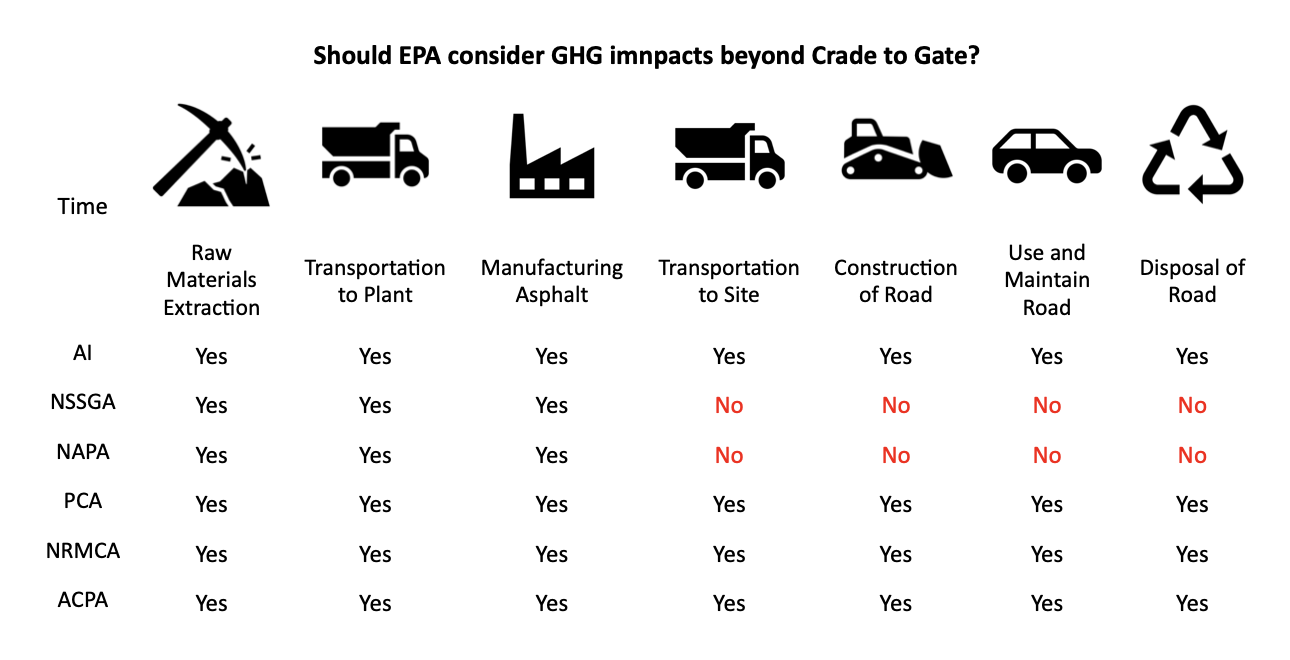
Last January the Environmental Protection Agency issued a Request for Information (RFI) to announce that it is seeking public comment on a series of questions about implementing $350 million for grants to develop tools asphalt manufactures can use, including carbon labeling, to report and substantially lower the levels of embodied carbon and other greenhouse gas emissions associated with all relevant states of production, use, and disposal of construction materials and products including asphalt, concrete, glass, and steel.
The RFI asked the public to respond to a series of questions grouped in three categories, (1) Material Prioritization and Data Improvement, (2) Environmental Product Declaration (EPD) Assistance, and (3) Substantially Lower Embodied Carbon Labeling. Over 200 comments were received by the May 1 deadline, provided a glimpse of where various industries stand on the issue of reducing carbon emissions and where focus should be applied.
One of the questions the RFI asked in regards to material prioritization was whether EPA should consider a whole project life cycle approach in EPD development and labeling of substantially lower embodied greenhouse gas emission materials and products. Most respondents felt that EPA should limit its focus to asphalt, concrete, glass and steel. But after that differences emerged.
As shown below, the National Stone, Sand and Gravel Association (NSSGA) and the National Asphalt Pavement Association (NAPA) opposed expanding EPA’s EPD and labeling authority beyond cradle-to-grate, siting uncertainty as the main reason. On the other hand, the Asphalt Institute (AI), Portland Cement Association (PCA), the National Ready Mix Association (NRMCA) and the American Concrete Pavement Association (ACPA) recommended EPA include the entire road’s life cycle in its carbon reduction strategy.

What should not be missed is what the actual legislative text says EPA should be considering. The Inflation Reduction Act (Public Law 117-169), which authorizes EPA’s involvement in this issue, directs the agency to label construction materials with “substantially lower levels of embodied greenhouse gas emissions association with all relevant stages of production, use, and disposal.” Emphasis added.
EPA will have to distill all the comments provided and come out with proposed guidance later this year that - once final - will have binding application on the asphalt companies working in the public-funded highway sector. EPA may have no choice but to implement the legislation based on what the law actually says and not what a few stakeholder groups are recommending. This means an asphalt company’s EPD may require downstream inputs beyond what the asphalt industry is prepared to deliver. And this is just one of many examples that could be highlighted where the construction material associations are on a different path towards what they would like to see in the implementation of these new carbon emission reduction requirements.
Plowing through pages of comments is never easy which is why Surface Tech has taken the time to read the comments and prepare a summary to make it easier for stakeholders to see where the major associations stand when it comes to decarbonizing the construction material industry.
The summary can be downloaded here.
Please reach out to me for more information or how Surface Tech can help asphalt producers get ready for the soon-to-come regulations on implementing a low carbon asphalt market.
